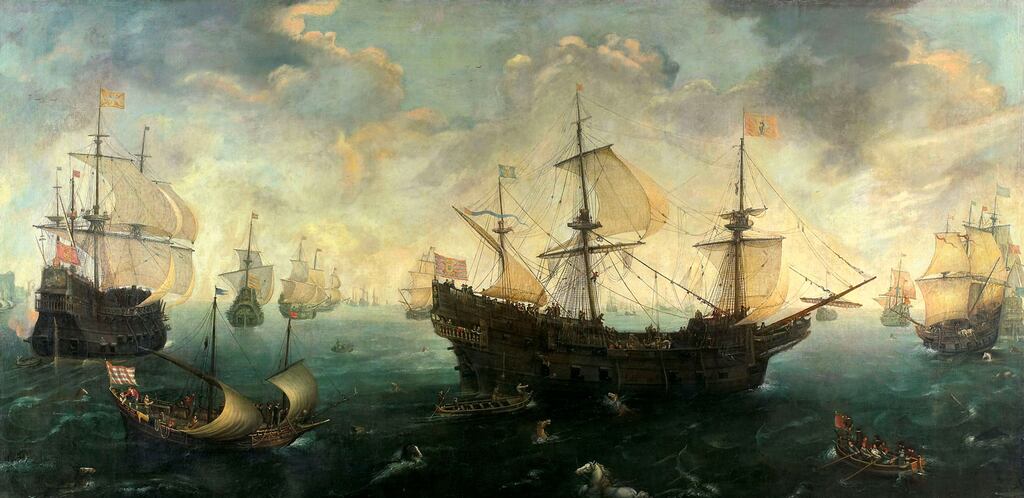Michael Barry has already published four impressive books on Spain, and this fifth, about the famous Spanish Armada, places special emphasis on the fates of some of the expedition along the Irish coast. This makes sense as most of the losses comprised shipwrecks on Ireland’s northern and western seaboards. He’s also anxious to show that, contrary to prevailing myths, more than two-thirds of the Armada survived to fight another day.
The background of deteriorating Anglo-Spanish relations is set out clearly: the revolt of the Spanish Netherlands supported by England; English piratical attacks on Spanish treasure fleets; the excommunication of Elizabeth I, and the call by Pope Sixtus V on Philip II of Spain to eradicate English heresy. There followed the assembling and equipping of the large Spanish military fleet which set sail at the end of May 1588.
Storms bedevilled it from the outset but it reached England and sailed along its southern coast in impenetrable formation to Calais, despite English naval attacks. However, the Duke of Parma’s invasion barges, full of soldiers, that were meant to be escorted by the Armada weren’t ready. English fireships scattered the fleet, but in the Battle of Gravelines that followed, only one Spanish ship was directly sunk.
Prevailing winds caused the decision to sail northwards around Scotland and then southwards down the Irish coast to return to Spain. Storms, especially along Ireland’s Atlantic coast, caused many shipwrecks, followed by the slaughter of some 1,500 survivors, mainly by English forces in Ireland. The wrecking of the Girona on the Antrim Coast, with the loss of 1,200 lives, and the destruction of three “naos” on Streedagh Strand, Sligo, are particularly graphically recounted.
Eimear McBride: ‘When my brother died, it was not only losing him but losing all the illusions that you were going to be safe’
Blind Spots by Marty Makary: Diagnosing the danger to our health of dogma over data
The Politics of Gender and Sexuality in Modern Ireland: A Reader. Harrowing histories that cohere under the north star of liberation
Books in brief: Cádiz: The Story of Europe’s Oldest City; It Comes From the River; and Web of Betrayal: Murder in Ireland’s Brutal Gangland
Barry also tells the little-known story of the English Armada of 1589, which proved a disaster, losing more men and ships than the Spanish had.
The subsequent anglophone historiography, portraying plucky little England (David) annihilating the powerful Spanish foe (Goliath), which reached its climax at the Victorian peak of the British empire, is well summarised. Recent Spanish books give a much more balanced perspective. “It was a close call for England” is Barry’s fair-minded conclusion.
He deserves praise for how clearly and well he tells the story, for his extensive use of sources, some in Spanish and Irish, and for the superb illustrations.
Brian Maye is a historian and critic













